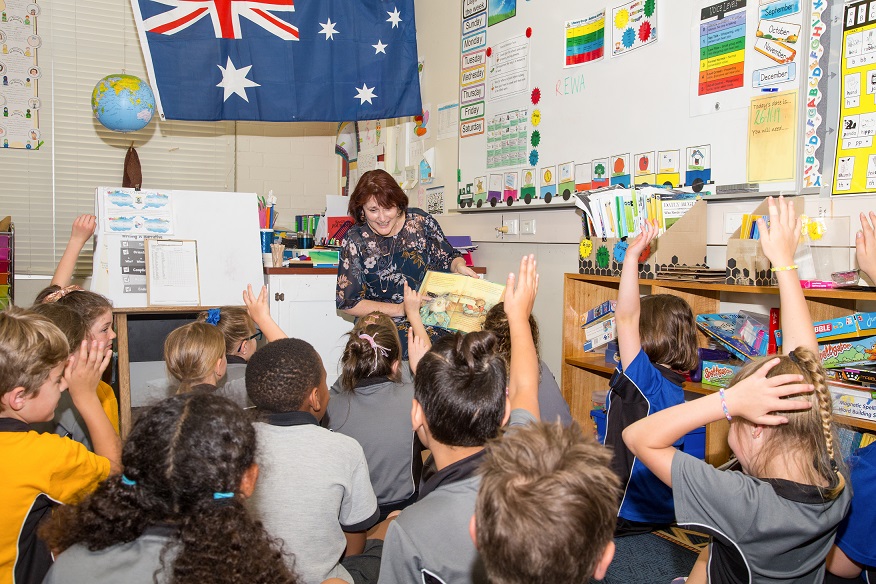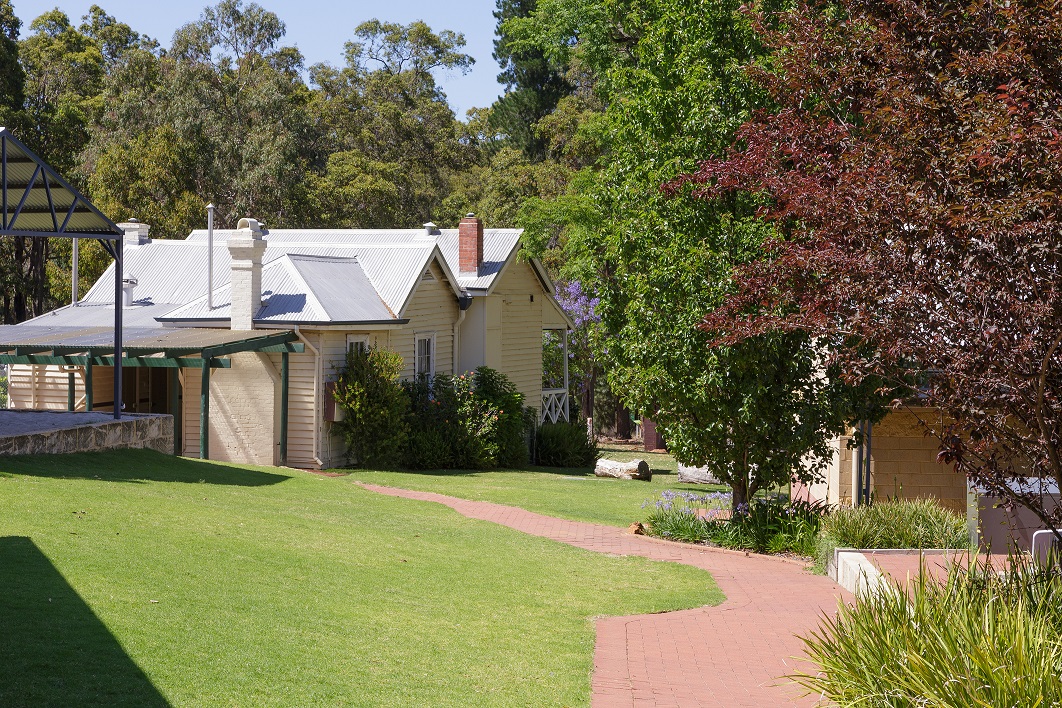
Sawyers Valley Primary School Principal, Fiona Collopy, reads to a busy classroom before the pandemic began
1. Can you explain what the school was like at the start of the pandemic? How quickly were things changing as you moved towards remote learning and virtual lessons?
Alison Charman (AC): A place that is usually full of noise, laughter and energy was empty and desolate. It was very quiet and surreal. For our teachers they had no idea about what was coming and what was expected of them. We’ve never taught online as a primary school before.
The teachers of the early childhood children needed to adapt their hands-on and interactive teaching styles to an online environment. So we were all trying to adapt our teaching programs as quickly and efficiently as possible, without making it onerous for parents.
Any teacher will tell you that if you’re teaching a new concept, you can’t do that just by putting a worksheet online. There was a little bit of anxiety in terms of lesson planning and how we can adapt in such a short space of time.
“We were all frantically experimenting with Zoom and other types of communication channels to see how this type of learning would work with the children. ”
Fiona Collopy (FC): Things started to ramp up later in Term 1, around week six which was the early stages of the pandemic. Some of our children started to stay at home, but the majority were still at school. By week seven we were down to half at school and half at home. By week nine, there were less and less children at school, and week ten we were moving towards the Easter break.
That week, the government said that only children whose families worked in essential services could come to school, but we were only able to provide supervision, no teaching. We had to move quickly to get everything ready for Term 2. There was a total of eight children out of 215 physically in the classroom, so for the rest we moved into online learning.
2. How have you been using Be You to help you over the last few months? Have you used any resources/ Fact Sheets to help you through this time? If so, which have been most helpful?
AC: The Reflection Tool resource has been really useful. That enabled us to rate our school in different areas, then reflect on the results about why we scored it that way. Fiona has devoted some time in whole school development where the whole staff looked at the resource and that was really valuable for us to come out with a plan.
Our culture is informed by School-wide Positive Behaviour Support which we commenced in 2016. We have sought to build a common language right across the school about Positive Behaviours.
Having common language, a shared culture, strong policies and procedures in place allows you to ride those bumps out. We’ve used this framework alongside Be You resources such as the surveys.
“The Be You Reflection Tool has really helped guide our decisions about our successes, and how we could improve going forward.”
3. How important have all these frameworks been for your school during COVID-19?
AC: We’ve also been using the Be You Mental Health Continuum to check in with our students during this time.
Having a strong and supportive culture around the importance of monitoring mental health and wellbeing is vital. If that’s already in place, then you’re seven eighths of the way towards building a response and strategy when something like COVID-19 happens. Like every other school, we’ve been on a rollercoaster, but I feel our rollercoaster hasn’t had as many downs because we have such a positive culture.
FC: We don’t try to grab a program and just put it in place. Our business plan is very clear on having a focus on the whole child. We look at their academics, their behaviour, their social, emotional, and physical health and their mental health. We have an awareness around all of that, then we ensure we have frameworks that dovetail onto one another.
4. How have you been communicating with families and parents through COVID-19? Have you embraced technology?
FC: There was a lot of information being sent out by other schools, but we decided as a team to see if there were any online tools which could help us. We were very aware that other schools were recommending lesson websites but we decided that we wanted a more personal approach which allowed for communication and connection with the children and their families.
We started using ClassDojo, which is a messenger service that allows us to adapt and streamline tasks. This allowed us to provide families with instant notifications so they could get information straight away.
Seesaw has been really useful, and we use a whole school messenger service called School Star. For staff meetings or larger events such as assemblies we’ve used Zoom.
AC: As soon as we had a timeframe for when children should be at home and not in the classroom, we felt the anxiety of our staff lowered, because they didn’t have to worry as much about social distancing in the classroom.
Once we had a clearer direction, it allowed us more time to investigate and plan for the best method of online learning to suit our community.
5. Have you noticed any students that need additional mental health support during the pandemic, and if so, what steps have you taken to help them?
AC: We have a family with a special needs child. The child was really struggling to understand why they couldn’t go to the park to play. We have a little nature play area at the school where children can build with sticks and there’s a little wooden bridge you can walk over.
We allowed the child’s mother to bring the child to school when children from essential workers families were attending but were in the classroom. She dressed her child in school uniform and effectively her child was allowed to be back at school and play so the family could have that break from the home.
Little gestures like that might be something small from our part, but from that mother’s perspective it was really important for her to escape the four walls of her home into surroundings that were familiar.
We initiated that. The family didn’t contact us, we went to them first and asked: ‘Are You OK?’ ‘How are you going with everything?’ ‘What can we do to help?’
FC: Since returning from the COVID-19 break we have revisited our three tiered approach to mental health.
“We used the Be You Mental Health Continuum to focus our teachers attention on monitoring mental health”
FC: The continuum outlines what to notice, when to be concerned and what to do. We have referred some children that fall into the tier 2 category to our school chaplain.
We have also had the student leaders devise some activities during lunch times to make coming back to school exciting and something to look forward to.
These activities are enticing for those students who had decided that staying home with their parents or carers was pretty good but the activities are accessible to all students and have helped all of us settle back to the school routine.

Sawyers Valley Primary in Western Australia